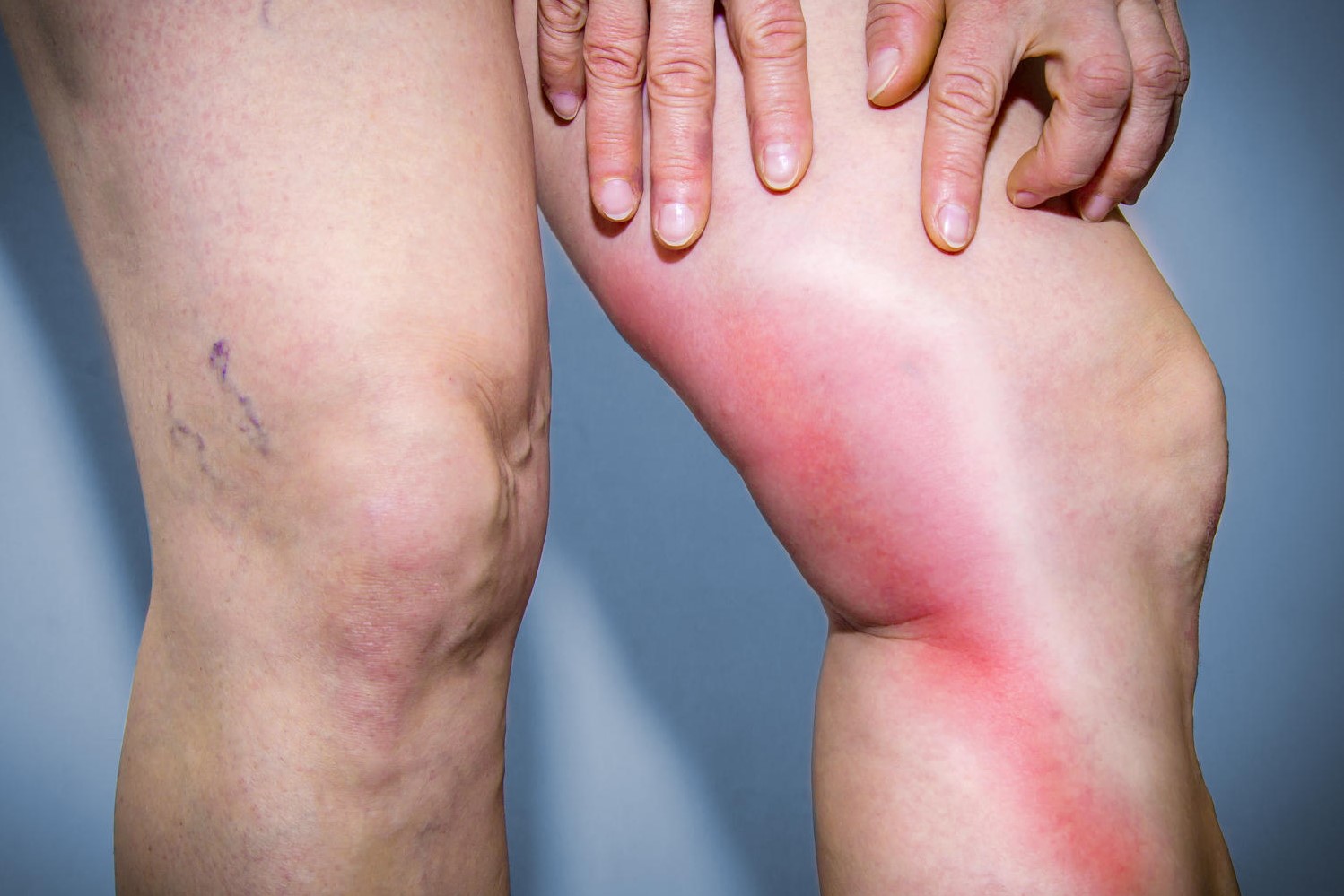
Phlebitis: symptoms, diagnosis, treatment
Phlebitis is a disorder characterised by an inflammation of the walls of blood vessels, particularly veins, the outcome of which is often a thrombus that prevents proper blood circulation
Typically, phlebitis affects the lower limbs, but can also affect other veins.
A distinction is made between superficial phlebitis, which affects veins located close to the surface of the skin (superficial thrombophlebitis), and deep phlebitis (deep vein thrombosis), which occurs deeper down.
Phlebitis, the symptoms
Symptoms of phlebitis include:
- pain, which tends to increase and radiate along the course of the vein
- signs of swelling
- redness and swelling
- sensation of heat and burning
The risk factors for phlebitis
The main risk factors for phlebitis are immobility and being sedentary.
Certain conditions can also predispose to the onset of superficial phlebitis, such as the presence of varicose veins, dilated vessels and poor wall elasticity.
Further causes include:
- overweight situations
- pregnancy
- use of the contraceptive pill or hormone replacement therapy
- coagulation problems
- trauma to a vein
- taking certain medications
Phlebitis, when to worry?
In the presence of phlebitis symptoms (such as redness, swelling and pain), a doctor should be consulted in order to monitor the condition and prevent it from evolving into more serious pictures.
When the deep venous system is affected, any blood clots that form can migrate and end up in the lung, leading to a pulmonary embolism.
If the symptoms are accompanied by significant swelling of the lower limb (oedema), perhaps with fever or difficulty breathing, you should go to the emergency room as soon as possible.
Tests for the diagnosis of phlebitis
The diagnosis of phlebitis is made on the basis of anamnesis, medical examination, symptoms, blood tests and instrumental investigations, such as the venous ecodoppler of the lower limbs, which allows the venous circulation in the legs to be assessed.
If necessary, in special conditions, and in more complex cases, the doctor may request more specific tests such as CT or MRI.
How is phlebitis treated?
The treatment of phlebitis involves anticoagulants with different indications in cases of extensive superficial phlebitis and in cases of deep vein thrombosis.
The doctor will indicate the most suitable drug, dosage and route of administration.
Can phlebitis be prevented?
The first thing to do to avoid the risk of phlebitis is to fight sedentariness.
When you are forced to sit for long periods of time, perhaps for work, it is important to get up from your chair every now and then, making some bending movements of the foot and leg and walking a little.
Constant physical activity also helps to improve the venous circulation of the blood, leading to a reduction in the number of people sitting.
Controlling body weight is also an important aid to prevention.
Read Also
Emergency Live Even More…Live: Download The New Free App Of Your Newspaper For IOS And Android
Saphenous Incontinence: What It Is And The Latest Techniques To Treat It
Orthopaedics: What Is Hammer Toe?
Hollow Foot: What It Is And How To Recognise It
Occupational (And Non-Occupational) Diseases: Shock Waves For The Treatment Of Plantar Fasciitis
Flat Feet In Children: How To Recognise Them And What To Do About It
Swollen Feet, A Trivial Symptom? No, And Here’s What Serious Diseases They May Be Associated With
Varicose Veins: What Are Elastic Compression Stockings For?
Varicose Veins In High Impact Sports: Why They Occur


